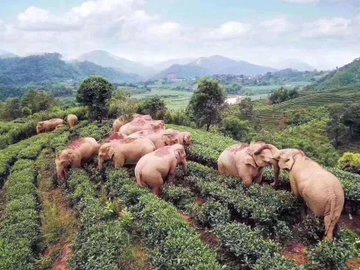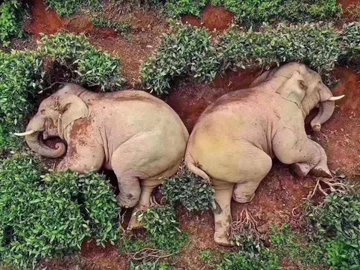Showing posts with label animais. Show all posts
Showing posts with label animais. Show all posts
August 24, 2020
August 13, 2020
Love you to death
Love you to death: how we hurt the animals we cherish
...
If an emphasis on appearance has had vastly damaging effects on all species, it has exercised a cruelly malign influence over those we keep as pets. Once bred for their qualities as working or hunting animals, for speed and strength, the “selective” breeding of dogs over centuries created diverse breeds from the single canine line, but in more recent years criteria for selection have changed in response to the demand for “pedigree” animals who conform to particular standards of behaviour and appearance. Not just for dogs, the way a creature looks seems a major determinant of their fate. Beginning with an already narrow gene pool, selective breeding has greatly increased the incidence of disease in these animals, many of whom, as a result of our choices, suffer from life-limiting or chronic, painful conditions.
...
A young man beside me holds a lead – at the end of it is a puppy standing patiently between us. In the moments before the crossing signal, I listen to the dog breathe. The sound is old and bronchitic, a dissonant issuing from this neat little body, the laboured wheezing of a young dog’s breath. The man is fashionably dressed, and the dog most probably loved and precious. I’m not sure if the dog is a French bulldog or a pug, but he’s one of those that now form a widespread, snuffling, breathless band of canine respiratory distress. The lights change, and man and dog walk off, the dog carrying his possibly malign genetic destiny, his future skin-fold pyoderma, the corneal ulceration that may affect his protruding eyes, the upper airway obstruction that is probably already causing him to wheeze. It’s not the first time I’ve wondered – what made this man and others seek out and pay for creatures who may live shortened, suffering lives?Scottish fold cats are subject to cartilage problems, leading to arthritic conditions, while Burmese cats are prone to diabetes mellitus, cranial deformities, glaucoma and kidney stones. Both Burmese and Siamese cats may also suffer from Boas, diabetes, asthma, lymphomas, strabismus, hip dysplasia and small intestinal adenocarcinomas. Rabbits such as the English “lop” have significant health problems caused by their overlong ears. Selectively bred rats are subject to a number of health problems, including greatly increased risk of tumours.
The small dog at the traffic lights is just one of many. Their popularity has increased to the point where, despite widespread publicity about their health problems, demand for them greatly exceeds supply, which has brought about not only the irresponsible breeding that produces unhealthy animals, but has also led to a huge increase in the hazardous and cruel “farming” of dogs, and their illegal trade and importation across borders. At least one danger of this trade is the possibility of the reintroduction of rabies, as a result of faked certificates and the importation of affected creatures. Images from puppy farms look remarkably similar to those from fur farms, showing the dirty, caged, abused and suffering creatures we still continue to buy.
What makes us do it? Why do we encourage a trade that exploits the sufferings of others? One suggestion is that the “childlike” appearance of dogs such as pugs and bulldogs attracts us – according to a theory in evolutionary psychology, Kindchenschema, also known as neoteny, a positive response to the appeal of babylike or cute faces is an evolutionary way of ensuring the survival and nurturing of offspring. The theory may be correct (if you really think that bulldogs look like babies), but it does not prevent us from making an ethical decision about who and what we buy. I watch at the traffic lights as the man leads the dog away, a lifelong victim of our desire for “cute”.
No longer simply a matter of small, personal decisions, our animal owning has implications far wider than the privacy of our homes. It is increasingly subject to the moral, financial and political questions raised by our knowledge of animal cognition, and urgent considerations of consumption and resource. Feeding our pets involves similar questions to the ones we ask about feeding ourselves – what is healthy, affordable, necessary, ethical and environmentally sustainable?
A 2017 study assessed the environmental impact of companion animals in the US. The findings were that dogs and cats were responsible for 25-30% of the environmental impact of all meat consumption, that they created 64m tonnes of carbon dioxide and methane, and produced 5.1m tonnes of faeces annually, the same as 90 million humans. The study suggested that, in the light of these figures, increasing pet-keeping worldwide will make a hugely significant contribution to our current ecological crisis. (The suggestion that the food fed to animals is a byproduct of human food production is refuted by the same study that points out that, increasingly, pets are being fed higher-quality meat and much of what is regarded as unfit for human consumption is deemed so more on aesthetic than other grounds.)
A braque d’Auvergne. Photograph
In 1943, the Nobel prize winning author Elias Canetti wrote: “It is not good that animals are so cheap.” He might have been writing about the hamsters, mice, rats, guinea pigs and gerbils frequently bought as suitable pets for children, some of whom will be loved, tended and eventually mourned, others of whom will be neglected or worse. Solitary creatures will be kept in pairs or groups, or social ones alone. Crepuscular or nocturnal creatures, as many of them are, will be expected to provide entertainment for diurnal children. Reluctantly, I remember school-gate conversations about unfortunate fates: the school rabbit forgotten over a summer when the parent who was to look after him went on holiday, the escaped mice, the hamsters who fell, disappeared, were drowned or squashed or found burned at the back of a gas fire. The incidents were invariably presented as amusing, told in a tone of mocking self-exculpation. I see a succession of online adverts selling unwanted hamsters and guinea pigs. The child for whom they were bought “lost interest”, the family is moving house, there was an accidental mating. (“Oops!”) What they are being sold for, the cost of a cup of coffee, is the cost of another creature’s life. What is the Umwelt of a puppy-farmed dog, a lone rat, a desert gerbil, a Syrian hamster in a small plastic box?
The vulnerability that Francione writes about extends beyond the boundaries of species. Our love for others – human or not – makes us vulnerable, open to pain and loss, and to the use and abuse of power and domination.
April 25, 2020
March 19, 2020
A ausência de humanos causa a felicidade de animais
While humans carry out social distancing, a group of 14 elephants broke into a village in Yunan province, looking for corn and other food. They ended up drinking 30kg of corn wine and got so drunk that they fell asleep in a nearby tea garden. 
 https://twitter.com/bylijing/status/1239573481252982789/photo/1pic.twitter.com/Xm1Mou497o
https://twitter.com/bylijing/status/1239573481252982789/photo/1pic.twitter.com/Xm1Mou497o

 https://twitter.com/bylijing/status/1239573481252982789/photo/1pic.twitter.com/Xm1Mou497o
https://twitter.com/bylijing/status/1239573481252982789/photo/1pic.twitter.com/Xm1Mou497o
Subscribe to:
Posts (Atom)









